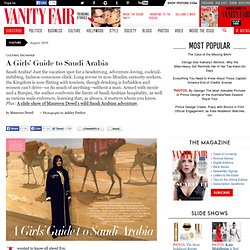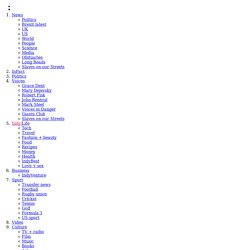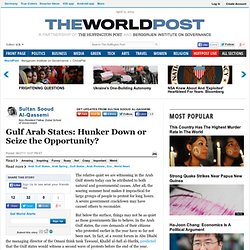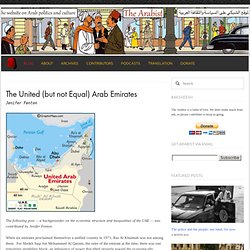

A Girls' Guide to Saudi Arabia. I wanted to know all about Eve.

“Our grandmother Eve?” Asked Abdullah Hejazi, my boyish-looking guide in Old Jidda. Under a glowing Arab moon on a hot winter night, Abdullah was showing off the jewels of his city—charming green, blue, and brown houses built on the Red Sea more than a hundred years ago. The houses, empty now, are stretched tall to capture the sea breeze on streets squeezed narrow to capture the shade.
The latticed screens on cantilevered verandas were intended to ensure “the privacy and seclusion of the harem,” as the Lebanese writer Ameen Rihani noted in 1930. The dark side of Dubai - Johann Hari, Commentators. The wide, smiling face of Sheikh Mohammed – the absolute ruler of Dubai – beams down on his creation.

His image is displayed on every other building, sandwiched between the more familiar corporate rictuses of Ronald McDonald and Colonel Sanders. This man has sold Dubai to the world as the city of One Thousand and One Arabian Lights, a Shangri-La in the Middle East insulated from the dust-storms blasting across the region. He dominates the Manhattan-manqué skyline, beaming out from row after row of glass pyramids and hotels smelted into the shape of piles of golden coins. And there he stands on the tallest building in the world – a skinny spike, jabbing farther into the sky than any other human construction in history. Gulf Arab States: Hunker Down or Seize the Opportunity? The relative quiet we are witnessing in the Arab Gulf streets today can be attributed to both natural and governmental causes.

After all, the soaring summer heat makes it impractical for large groups of people to protest for long hours. A severe government crackdown may have caused others to reconsider. But below the surface, things may not be as quiet as these governments like to believe. In the Arab Gulf states, the core demands of their citizens who protested earlier in the year have so far not been met. Yemen’s Protests and the Hope for Reform. In early March, as tens of thousands of people were calling for revolution, Ali Abdullah Saleh, who has been the President of Yemen for the past thirty-three years, staged an enormous celebration of himself.

Uprisings across the Middle East had already swept away two of Saleh’s peers and were threatening to bring down his own regime. In the capital, Sanaa, thousands of Yemenis filed into the Stadium of the Revolution, their loyalty insured by the promise of payments after the rally. The United (but not Equal) Arab Emirates.
The following post — a backgrounder on the economic structure and inequalities of the UAE — was contributed by Jenifer Fenton.

When six emirates proclaimed themselves a unified country in 1971, Ras Al Khaimah was not among them. For Sheikh Saqr bin Mohammed Al Qasimi, the ruler of the emirate at the time, there was one remaining stumbling block: an imbalance of power that tilted strongly toward the economically dominant emirates.
Today, that imbalance remains. Privilege Pulls Qatar Toward Unhealthy Choices. Museums in Abu Dhabi and Qatar. Les artisans du Louvre Abou Dhabi. Petition « Who's Building the Guggenheim Abu Dhabi? March 16, 2011 To: Richard Armstrong, Director Solomon R.

Guggenheim Foundation 1071 Fifth Avenue New York, NY 10128.